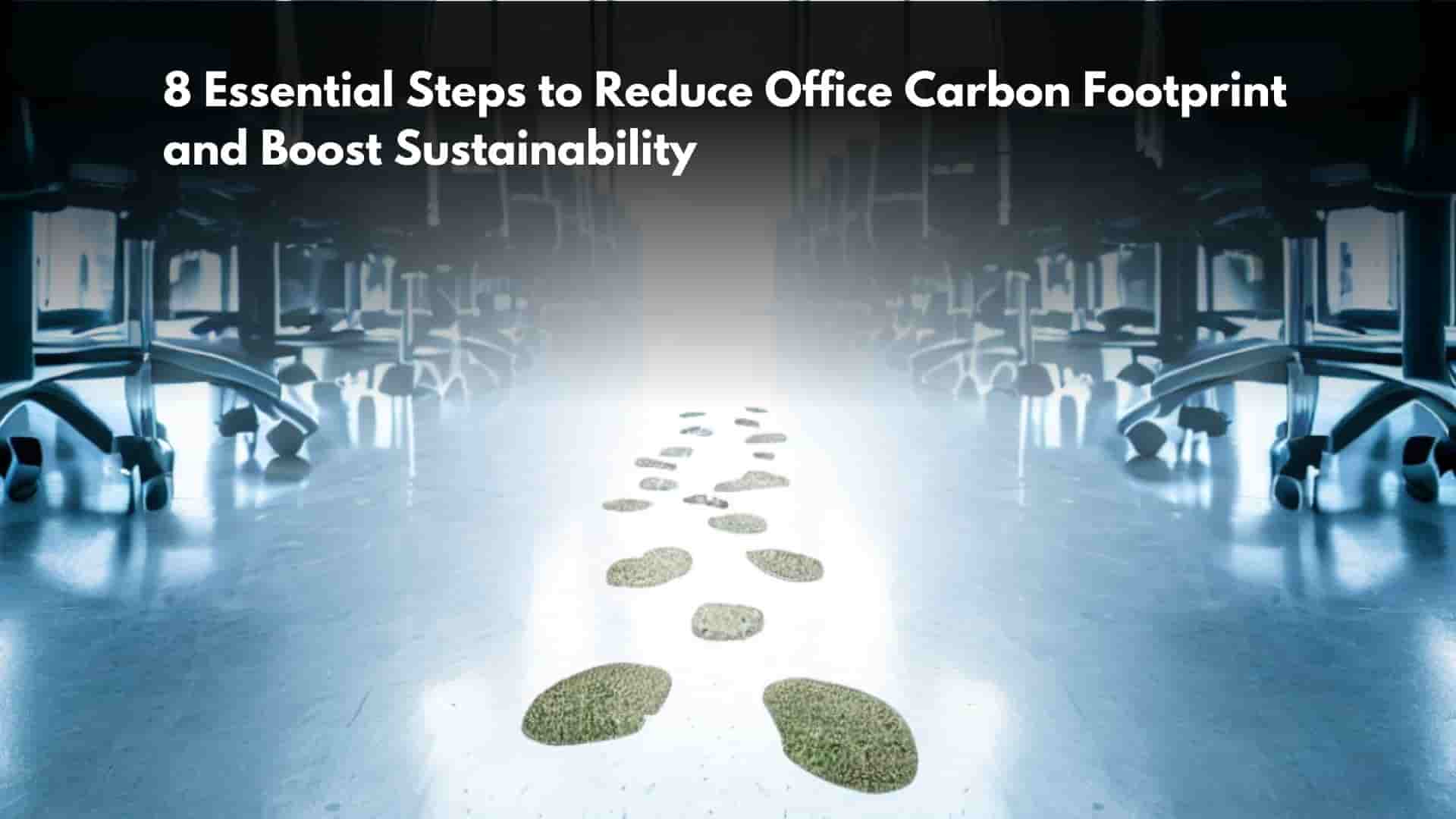As the global climate crisis intensifies, the need for businesses to take sustainability seriously has never been more critical. Reducing your office’s carbon footprint not only benefits the environment but also positively impacts your bottom line. Sustainability has become a key competitive advantage, influencing customer choices, employee morale, and regulatory compliance. In this blog, we’ll explore practical steps and strategies, including collaborating with office interior designers, to help your office become more environmentally friendly and reduce its carbon footprint.
- Energy Efficiency
Energy consumption is one of the most significant contributors to an office’s carbon footprint. Making energy-efficient changes can lead to substantial reductions in emissions and energy costs. Here are some measures to consider:
1.1. Upgrade Lighting: Replace traditional incandescent and fluorescent bulbs with energy-efficient LED lights. They last longer and use less electricity, reducing energy consumption and costs.
1.2. Install Smart Thermostats: Programmable or smart thermostats can help regulate heating and cooling systems efficiently, saving energy when the office is empty or during non-working hours.
1.3. Unplug Electronics: Encourage employees to unplug devices and chargers when not in use. Even in standby mode, these devices consume energy.
1.4. Use Natural Lighting: Design your office layout to maximize natural light, reducing the need for artificial lighting during the day.
1.5. Invest in Energy-Efficient Appliances: When it’s time to replace office appliances, choose Energy Star-rated equipment, which consumes less electricity.
- Reduce, Reuse, and Recycle
Waste management is another area where offices can significantly decrease their carbon footprint. Here are ways to implement the three Rs:
2.1. Reduce Waste: Encourage employees to reduce paper waste by printing only when necessary. Implement a policy to reduce single-use plastics and consider bulk purchasing to minimize packaging waste.
2.2. Reuse Materials: Whenever possible, reuse office supplies like folders, envelopes, and binders. Establish a dedicated area for reusable office items that employees can access.
2.3. Recycle: Implement a comprehensive recycling program, ensuring that paper, cardboard, glass, plastic, and electronics are recycled properly. Place recycling bins in accessible locations and educate employees on what can and cannot be recycled.

- Sustainable Transportation
Promoting sustainable commuting options for employees is essential for reducing your office’s carbon footprint. Consider the following measures, including working with office interior designers to create a more eco-friendly and convenient workspace:
3.1. Public Transit Incentives: Offer subsidies, pre-tax commuter benefits, or flexible hours to encourage the use of public transportation.
3.2. Carpooling and Ride-Sharing: Create a carpool program or partner with ride-sharing services to reduce the number of individual vehicles commuting to the office.
3.3. Bike-Friendly Facilities: Provide secure bike storage, showers, and changing rooms to encourage cycling to work.
3.4. Remote Work Options: Encourage remote work arrangements, which not only reduce the office’s carbon footprint but also improve work-life balance.
- Sustainable Office Design
The layout and design of your office space can have a significant impact on its carbon footprint:
4.1. Green Building Materials: When renovating or designing your office, opt for eco-friendly building materials, such as recycled or sustainable wood and low-VOC paint.
4.2. Energy-Efficient Windows: Install energy-efficient windows to better insulate the office, reducing the need for heating or cooling.
4.3. Indoor Plants: Incorporate indoor plants to improve air quality and create a natural, calming atmosphere.
4.4. Proper Insulation: Ensure the office is well insulated to maintain a comfortable temperature with less energy use.
- Sustainable Procurement
Sourcing environmentally friendly products and services can significantly reduce your office’s carbon footprint:
5.1. Eco-Friendly Supplies: Choose office supplies made from recycled or sustainable materials. Select vendors with a commitment to reducing their carbon footprint.
5.2. Digital Documentation: Minimize the use of paper by digitizing documents, contracts, and communication processes.
5.3. Energy-Efficient Equipment: Invest in energy-efficient office equipment, such as computers, printers, and copiers, which consume less power and generate less heat.
- Employee Engagement
Engaging employees in sustainability initiatives is crucial for success. Here are some ways to involve your workforce:
6.1. Education and Training: Offer workshops and training sessions on sustainability practices, emphasizing the importance of reducing the office’s carbon footprint.
6.2. Green Teams: Create a dedicated group of employees responsible for implementing and monitoring sustainability initiatives.
6.3. Incentives and Rewards: Recognize and reward employees for their eco-friendly efforts. This can motivate others to adopt sustainable practices.
6.4. Feedback and Suggestions: Encourage employees to provide feedback and suggest new sustainability initiatives. They may have valuable insights into reducing the office’s carbon footprint.

- Sustainable Meetings and Events
Office meetings and events can be significant contributors to a carbon footprint. Implement these strategies:
7.1. Virtual Meetings: Whenever possible, opt for virtual meetings instead of in-person gatherings to reduce travel emissions.
7.2. Sustainable Catering: Choose caterers that prioritize local, organic, and sustainably sourced food options.
7.3. Minimize Waste: Reduce single-use items at events and encourage recycling and composting.
- Monitoring and Reporting
Tracking your office’s progress in reducing its carbon footprint is crucial for ongoing improvement. Consider these steps:
8.1. Energy Audits: Conduct regular energy audits to identify areas for improvement and track energy consumption.
8.2. Carbon Accounting: Calculate and report your office’s carbon emissions and set reduction targets.
8.3. Sustainability Reports: Create annual sustainability reports that outline your office’s progress, challenges, and goals.
Reducing your office’s carbon footprint is a multifaceted endeavor that requires a commitment to sustainability at all levels of your organization, including the expertise of office interior designers. By implementing the strategies outlined in this blog, you can minimize your environmental impact, save on energy costs, improve your reputation, and contribute to a more sustainable future. Remember, every small step towards sustainability makes a significant difference, and it’s a responsibility we all share in the fight against climate change.
